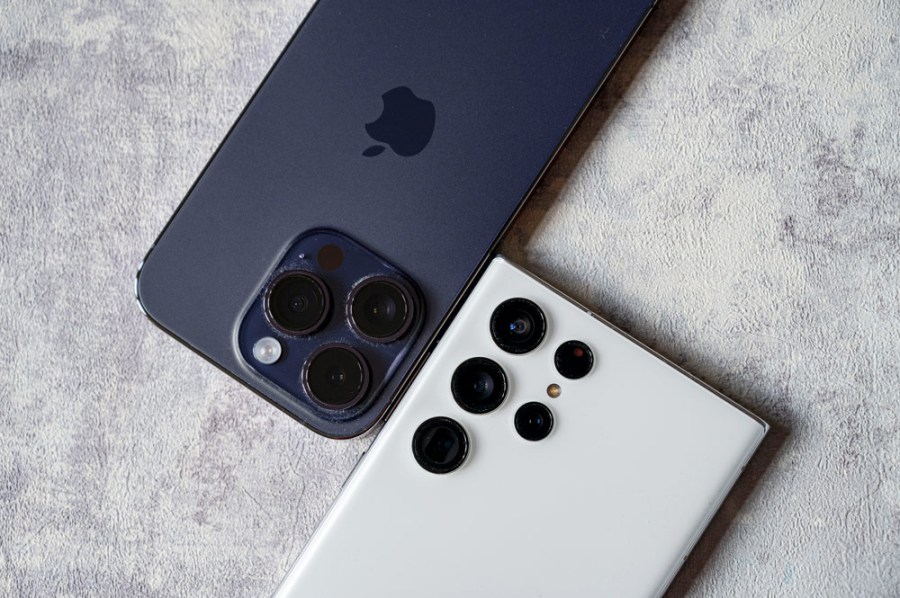Which is the best smartphone for photography? Amy Davies aims to settle the question in this comparison of the Apple iPhone 14 Pro vs Samsung S22 Ultra.
Apple and Samsung are clearly the two biggest players in the smartphone market right now. While there’s no shortage of choice out there, it’s likely you’re picking between these two brands if you want one of the best smartphones around – especially if its camera quality is a key factor in your choice.
In this guide, we pit two smartphone titans against each other; the Apple iPhone 14 Pro squaring up to the Samsung Galaxy S22 Ultra as value alternatives to their respective makers’ latest flagship models: the Samsung Galaxy S24 Ultra and the iPhone 15 Pro Max are those, and are compared here.
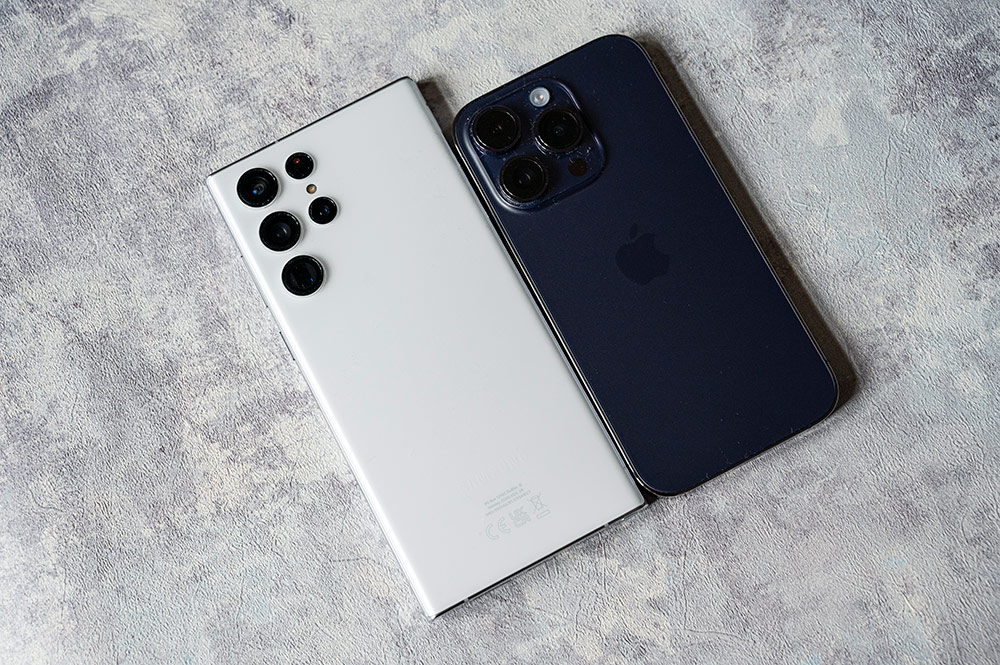
A longstanding trend of the tech industry is that the arrival of updated models causes prices of previous ones to drop. The S22 Ultra remains a fantastic smartphone in its own right. If you don’t fancy paying the considerable outlay for the Samsung Galaxy S23 Ultra or the latest S24 lineup, the S22 Ultra may well be a better choice, and in many ways makes for a more natural comparison to the slightly older iPhone 14 Pro.
For a breakdown of differences between other Samsung models, check out our rundown of Samsung S23 Ultra vs Samsung S22 Ultra, and see how the S23 fared against Apple’s iPhone 14 Pro vs Samsung S23 Ultra: cameras compared.
So, does Samsung’s former star smartphone have what it takes to be the best choice for photographers? Or is Apple’s iPhone 14 Pro a better bet? We’ve taken both phones out together and conducted side-by-side tests of their camera capabilities to find out. Read on to discover what we found.
Camera Specs
It’s been pretty standard for a few generations now for smartphones to have multiple lenses, enabling shots from a variety of viewpoints.

The iPhone 14 Pro has a triple-lens setup, but the Samsung S22 Ultra manages to go one better by having four cameras on the rear. Both have an ultra-wide, a standard lens, and a 3x zoom lens, but you also get a 10x zoom lens with the Samsung.
Both the iPhone’s main camera and the Samsung’s have high-resolution sensors, with the iPhone coming in at 48MP, and the Samsung’s at 108MP. It’s the first time we’ve seen a sensor with more than 12MP on an iPhone, and Samsung’s spec felt pretty seminal at the time, though it didn’t take long for the S23 and its 200MP to come barging in and knock it off the perch.
Both use pixel binning to output images at a standard 12MP, but you can take advantage of all of those extra pixels using special modes with both cameras if you prefer. The high resolution also enables a “2x” mode for the iPhone 14 Pro, as it’ll essentially crop into the centre of the image.
The main lenses for both models are similar in specification. The iPhone’s equivalent focal length is 24mm with a f/1.78 aperture, while the Samsung’s is a smidge wider at 23mm, and an f/1.8 aperture.
Both the ultra-wides have a 13mm equivalent focal length, and both have an f/2.2 aperture.
When it comes to the 3x lens, the iPhone 14 Pro’s is 72mm equivalent, aperture f/2.8, while the Samsung’s is 70mm, aperture f/2.4.
The 10x zoom on the Samsung S22 Ultra gives you a 230mm equivalent focal length, but the aperture is pretty narrow at f/4.9.
Looking at these specifications, we might expect the S22 Ultra to be slightly better in low light, but we’ll see how that shapes up below.
Camera apps and shooting modes
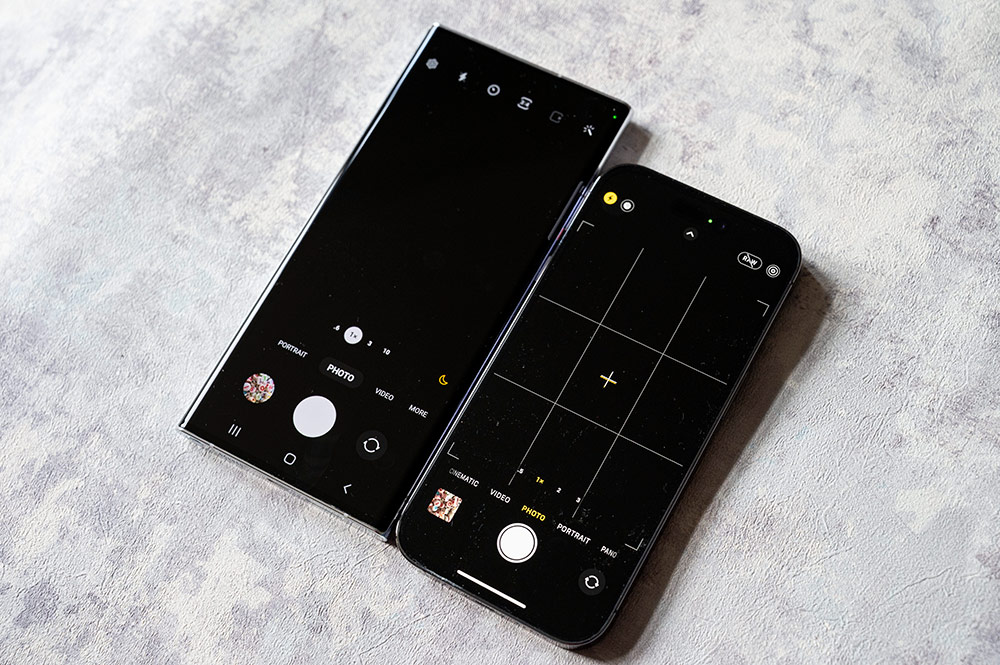
In terms of shooting modes, the Samsung S22 Ultra offers a much more comprehensive native camera app. As well as standard photo modes, a portrait mode, and a selectable night mode, we also have a “Pro” mode which gives you access to a variety of settings, such as shutter speed and ISO. This is something which is sadly not available via the iPhone’s native app – though of course you can install plenty of third-party apps to give you this functionality.
Both offer a Night mode, but the iPhone’s is automatic, only activating when low-light is detected. The Samsung will do the same, but you can also choose the mode manually too. Both have a macro mode, and this time, both are automatically activated by bringing the camera close to a subject. Both give you the option to record in raw format. With the iPhone you can do that in the standard shooting mode, which also means you can create 48 megapixel images. You can only access raw format shooting with the Samsung when using “Pro” mode.
General image quality
Looking at images taken with either smartphone side by side reveals that both take very good photographs, especially if the light is good.


Both produce nicely detailed results, with bright and punchy colours that remain realistic.


It’s very hard to pick between the two, but if we had to, we’d perhaps say that overall the iPhone produces slightly nicer, warmer colours in good light. But this is being very picky (and is also arguably a matter of preference) when looking at images side by side of the same subject, which is not something that would happen in normal usage.


As the Samsung has an extra lens when compared to the iPhone, then zooming capability is better.
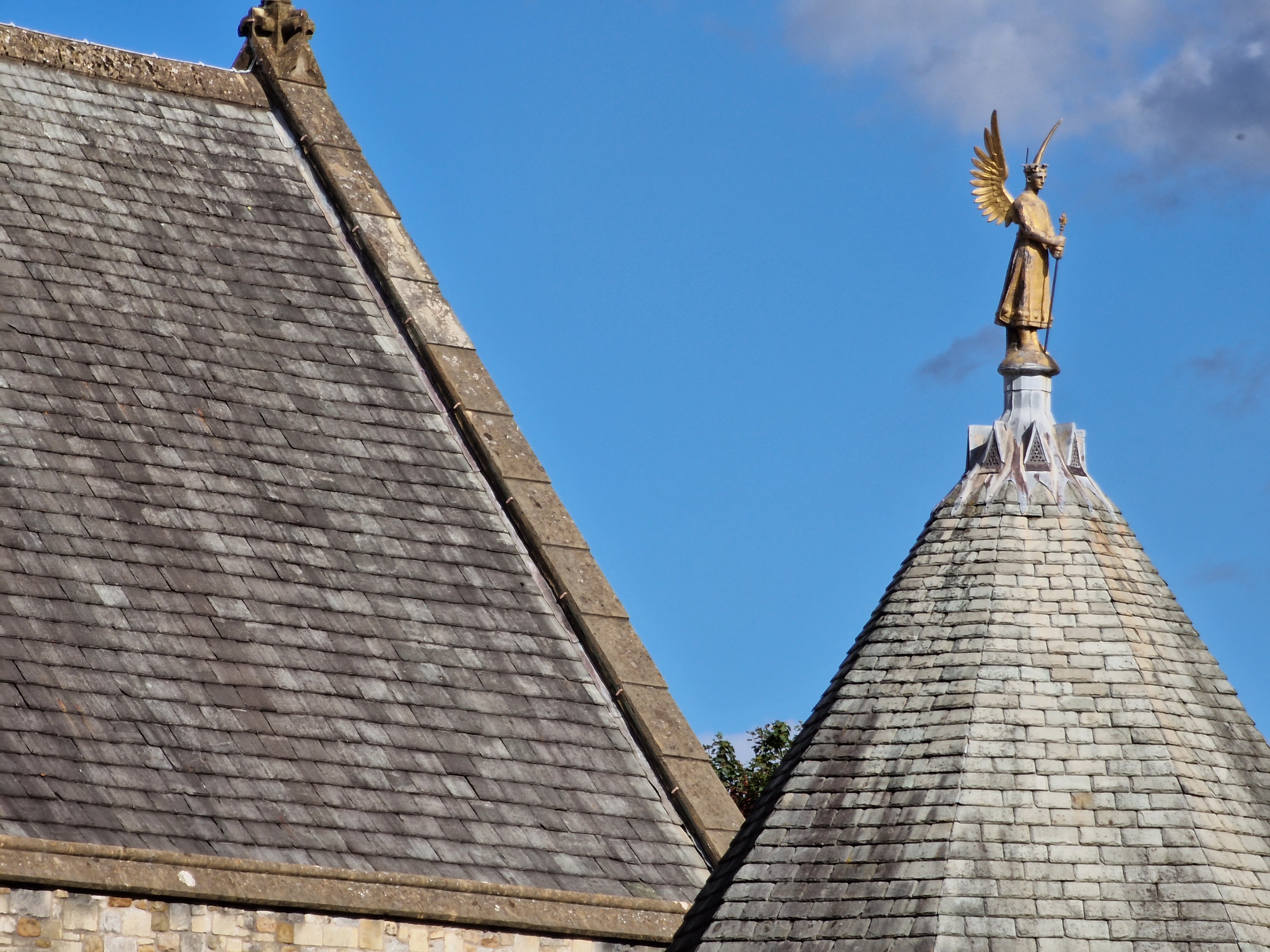
It’s easier to pick out differences if we look at specific types of subjects, see below.
Low Light
Both smartphones put in an excellent performance in low light, demonstrating just how far low light photography has come in the smartphone world.


If you examine closely, you can see that the S22 Ultra produces slightly better results when photographing the scene, with the Samsung being slightly cleaner and more detailed.


Colours also seem to be slightly better rendered under artificial night lights, such as street lighting, with the Samsung S22 Ultra.


One difference can be found in the results from the 3x camera, where the Samsung S22 Ultra uses digital zoom in low-light rather than using the telephoto camera.
There’s not a huge amount in it, but if you’re somebody who photographs a low-light subjects, the S22 Ultra might just sway it for you.
Macro
Both the iPhone 14 Pro and the Samsung S22 Ultra have an automatically activating macro mode which switches on when the phone detects it is close to a subject.
You can switch it off if you prefer with either phone, but there’s no option to select it manually. This shouldn’t be a problem as both phones seem to detect very easily when a close-up subject is present.


Both produce very good results which show plenty of detail, with both allowing you to practically touch the subject and still be able to focus. The Samsung S22 Ultra just about produces the best results overall. Both do well in good light, but in low light, the Samsung S22 Ultra produces brighter and cleaner images.
Portrait
Some kind of portrait mode has been available on most smartphones for some time now, so it’s no surprise that both the iPhone and Samsung models have options available.


Both are called simply “Portrait” mode, and both work to create shallow depth of field effects. You can use both modes for non-human subjects, too.


For the iPhone 14 Pro, you can shoot photos at either “1x”, “2x” or “3x”, giving you a bit more flexibility when it comes to different vantage points, compared to the Samsung S22 Ultra, which offers just a “1x” and a “3x” option.
Both produce good results for both human and non-human subjects, but the iPhone produces ever so slightly more flattering results, which are softer and less harsh. If you view them both in isolation though, you should be pleased with how they look.
Video
Both smartphones claim to be excellent for video purposes, but if you want 8K video, there’s only one of the two that does that – the S22 Ultra.
For most users, 4K is generally more than they need, and both produce excellent 4K video at up to 60p. Both offer advanced stabilisation options, the Samsung’s is called “SuperSteady”, while the iPhone’s is called “Action Mode” – and it’s also worth noting that the standard iPhone video is also stabilised too.
For advanced users, the Samsung has the more in-depth mode, giving greater flexibility to change settings with its Pro Video mode. By contrast, although the iPhone doesn’t offer such a thing, it does have “ProRes” recording for better colour and less compression.
Both offer other useful modes, such as slow motion and a shallow depth of field effect. For the iPhone that’s called Cinematic, and for the Samsung it’s called Portrait video. The iPhone’s is a bit more naturalistic, with the Samsung sometimes producing very harsh results.
Screen and Design
The iPhone 14 Pro is available in two sizes, giving you the choice between a 6.1” screen and a 6.7” screen – the latter being called the iPhone 14 Pro Max. The smaller size is more pocket friendly, and is easier to use for non-photographic purposes, such as sending texts and emails. The good news is that there’s no difference between the camera quality between the two sizes.
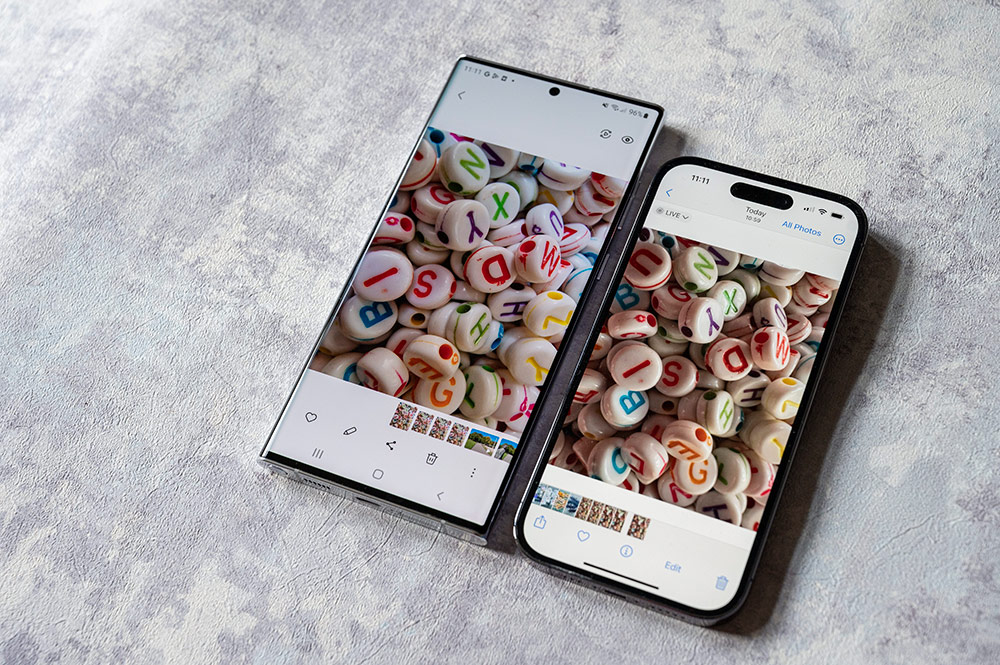
By contrast, the Samsung S22 Ultra only offers one size – and is 6.8”. That’s great news for those who like a bigger screen, but less appealing for those who want something pocket friendly. The S22 Ultra has a higher resolution than even the larger iPhone 14 Pro Max, but placing the two side by side doesn’t reveal any immediately obvious differences – they both essentially look great.
The iPhone 14 Pro has a boxier design than the S22 Ultra, which uses more curved edges. Which you prefer is up to you, but it’s probably fair to say that the S22 Ultra is the sleeker option. Both are IP68 rated, meaning that they can withstand dust and water, and both are designed to be relatively tough – the iPhone 14 Pro has a Ceramic Shield screen, whereas the S22 Ultra has a Corning Gorilla Glass Victus screen. Both should withstand most ordinary knocks and scrapes with ease.
Battery Life and Capacity
Although Apple is pretty coy about battery specifications, we can see from quoted battery life that both the iPhone 14 Pro and the Samsung S22 Ultra are pretty similar.
The Samsung S22 Ultra has a 5000mAh battery is quoted as lasting 22 hours for video playback, while the iPhone 14 Pro has a quoted 23 hours, or 29 hours for the larger iPhone 14 Pro Max. In real-world use, we’ve found that both models easily last a full day when using them relatively “normally”.
Both offer fast charging, whereby you can give the phone a quick boost when using a high-powered charger, and both offer wireless charging.
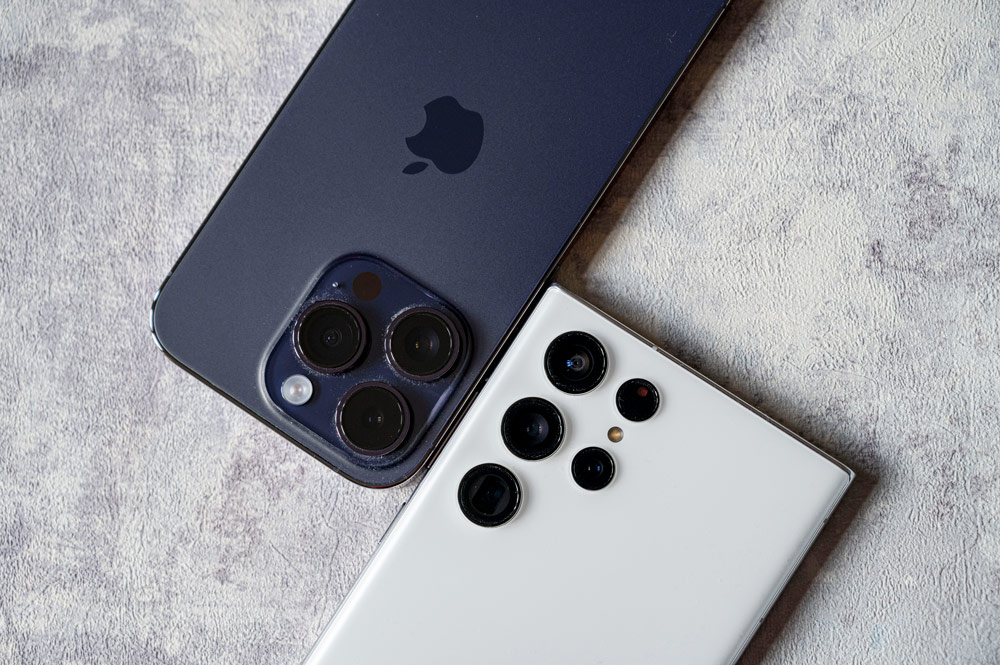
In terms of storage capacity, neither phone gives you the opportunity to expand storage, so it’s worth spending as much as you can to get a higher storage capacity if you particularly think you’ll need it.
Both the iPhone 14 Pro and the Samsung S22 Ultra offer a minimum storage of 128GB and a maximum of 1TB (though at the time of writing, it was difficult to find any 1TB models for sale). It’s also worth noting that if you opt for that storage size with the S22 Ultra then it comes at the cost of less RAM (8GB vs 12GB for 256GB/512GB/1TB storage options).
You don’t have a similar problem with the iPhone 14 Pro, but again, it’s worth noting that if you opt for the 128GB storage option, you won’t be able to shoot in 4K in ProRes video mode – this is something that is unlikely to be a major issue for most consumers, but if you’re buying the phone particularly for videography features, it’s worth thinking about.
Price
Both of these models have expensive price tags, there’s not really any getting around that fact.
The cheapest iPhone 14 Pro is $999/£890 for the 128GB capacity model, which rises up to $1,499/£1,584 for the 1TB model. In between you have $999/£999 or $1,299/£1,199 for the 256/512GB models. The larger iPhone 14 Pro Max starts at $1,099/£999, and rises up to $1,599/£1,689 for the 1TB model, with $1,199/£999 and $1,399/£1,299 in the middle for the 256/512GB versions.
Initially, the cheapest Samsung S22 Ultra was $920/£1,049 for the 128GB version, or you could pay $1,020/£1,149 for the 256GB version, or $1,200/£1,229 for the 512GB version. However, the arrival of the S23 has changed the game somewhat. Currently you can get an S22 Ultra handset for around $850 / £670, and if you’re prepared to buy second-hand you can snag one for around £550 or $650, depending on specs. Shop around and it’s possible to pick up a real bargain.
By comparing these prices, we can see that the S22 Ultra is giving you more bang for your buck, even if it doesn’t quite have the polish of a brand new iPhone.
iPhone 14 Pro vs Samsung Galaxy S22 Ultra: Verdict
Both of these phones offer a lot for those who prize the quality of a smartphone’s onboard camera. It’s unlikely you’ll be disappointed with whichever you choose.
For image quality, the two are generally well matched. The Samsung has a little more scope for its zoom capability with that extra lens, as well as the facility to control settings directly within the native camera app.
For low light and macro shooting, the Samsung seems to produce slightly better results, but for Portrait mode, the iPhone just about edges it. Video quality is great between both models, but again, the Samsung has greater flexibility and also has the headline specification of 8K, just in case you need it.
It’s quite difficult to choose between models like this when they are both so good. And of course, for many it will come down to whether you prefer iOS or Android – if you’re firmly set one way or the other, it could be that no matter how good the camera is, you can’t be swayed.

Then there are other specifications such as screen size to think about. The Samsung Galaxy S22 Ultra is undeniably very large, and if that’s what you like, then it’s perhaps the way to go. Then again, if you prefer a smaller phone, you might find it too unwieldy.
Overall, we’d say that the Samsung S22 Ultra just about edges it. It’s more flexible, image quality is excellent in more conditions, and there’s no denying that a large screen is beautiful to look at. Plus, the arrival of the S23 and S24 series has seen the price come down, so you’ll get significantly better value for money.
Further reading:
- iPhone 13 Pro vs 14 Pro comparison!
- Samsung Galaxy S22 Ultra review
- iPhone 14 Pro review
- Samsung Galaxy S23 Ultra – the ultimate camera phone review
For even more options take a look at our guide to the best smartphones for photography.
Follow AP on Facebook, Twitter, Instagram, YouTube and TikTok.

